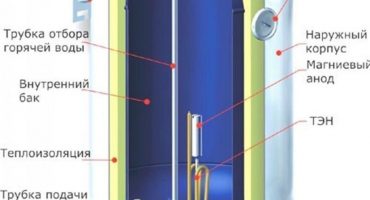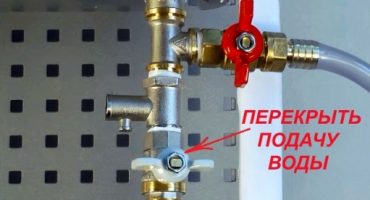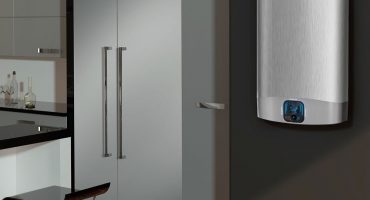The availability of hot water supply is one of the main signs of a comfortable home. Instantaneous water heaters running on electricity can fully provide people living in a private house or apartment with water heated to a certain temperature. About what water heaters of this type are, as well as which model to give preference to, will be described in detail in this article.
Electric instantaneous water heater: principle of operation

Instantaneous water heater
A flowing water heater is a device in which the heating of a liquid occurs during its movement. The main advantage of such water heating plants is their compactness. Also, electric heaters allow heating the liquid almost instantly, which is especially convenient when installed in the country, when housing is not used on an ongoing basis.
Instantaneous water heater consists of a small volume flask, in which there is a heater. Water passing through the flask is heated to a certain temperature, after which it flows to the water points. To prevent boiling water, as well as for timely switching on of the device, various sensors and relays are used in the device. To ensure electrical safety, the casing of the heater must be connected to the grounding contact of the wiring.
Depending on the power of the device, the water heater can be installed in one water outlet or have a wiring to all consumers of hot liquid.
What are flow heaters
Flowing electric heaters are divided into the following types:
- Pressure
- Pressureless.
Pressure devices are suitable for providing a multi-storey building with a large number of draw points, but this type of heaters will only work if a rather high pressure is created in the supply water pipe.
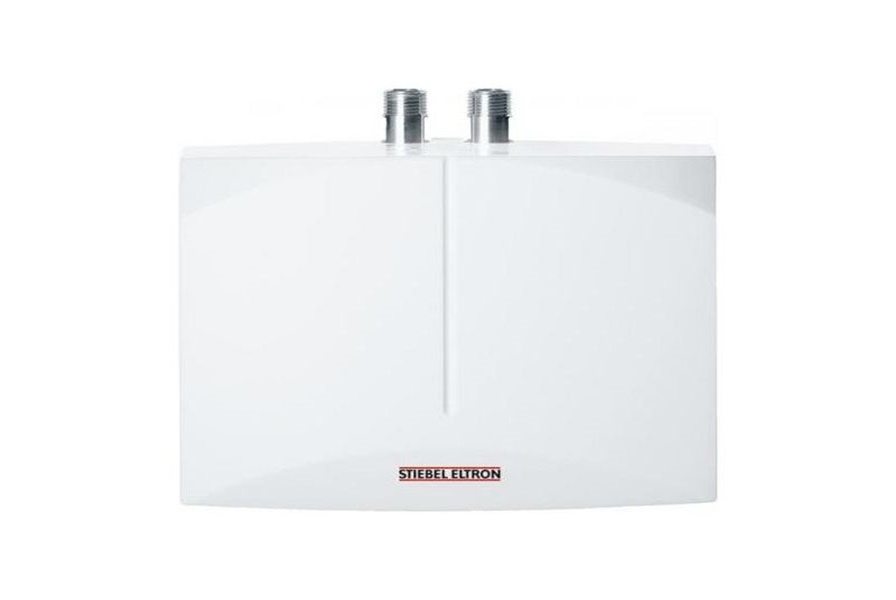
Pressure Heater
Non-pressure devices operate in the water supply system without significant pressure, but it will not work for several consumers to use this type of heaters. Usually non-pressure devices are installed directly next to the tap or shower. Many models have a built-in faucet at the bottom of the hot water heater.
The device must be correctly installed, because if you install a non-pressure water heater in a system where there is an increased liquid pressure, then during operation the device can be damaged as a result of a break in the working shell.
Pressure and pressureless devices can also have a different type of heating element. The device can be installed:
- TEN
- Uninsulated spiral
If the device uses a conventional high-power heater, then the formation of scale, when using hard water, can become the main cause of an early breakdown of the device.
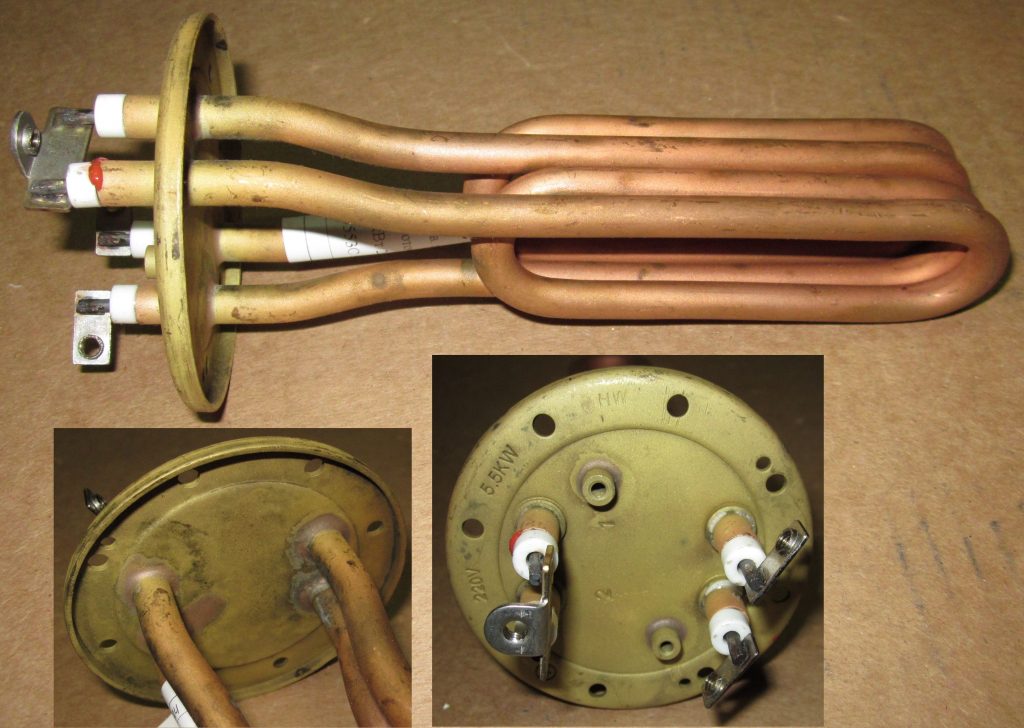
TEN of a flowing water heater
An uninsulated spiral is devoid of such a drawback, but during operation it can easily be damaged if there are air jams in the water supply system.
All instantaneous electric water heaters can be divided by type of control.The principle of regulating the temperature of the heated fluid can be as follows:
- Hydraulic
- Electronic
Devices equipped with hydraulic control are very reliable, but as a rule, in such devices, to switch the operating modes of the water heater, mechanical switching of the toggle switch located on the device’s body should be performed.
When using water heaters with electronic control, you can quite accurately set the temperature on the display, which will be maintained automatically.
An important characteristic of flow heaters is performance. It is expressed in the volume of water heated to a certain temperature for 1 minute. The larger the number of water outlets will work simultaneously, the higher productivity should be instantaneous water heater installed.
Instantaneous electric water heater: pros and cons
Flow-type water-heating equipment has disadvantages and advantages in comparison with the installation of other hot water supply systems. To understand the main advantages and disadvantages of instantaneous water heaters, the positive and negative characteristics of such devices will be further considered.
Pros:
- Production of unlimited amounts of hot water.
- High fluid heating rate.
- Suitable even for a small room, because it does not take up too much space.
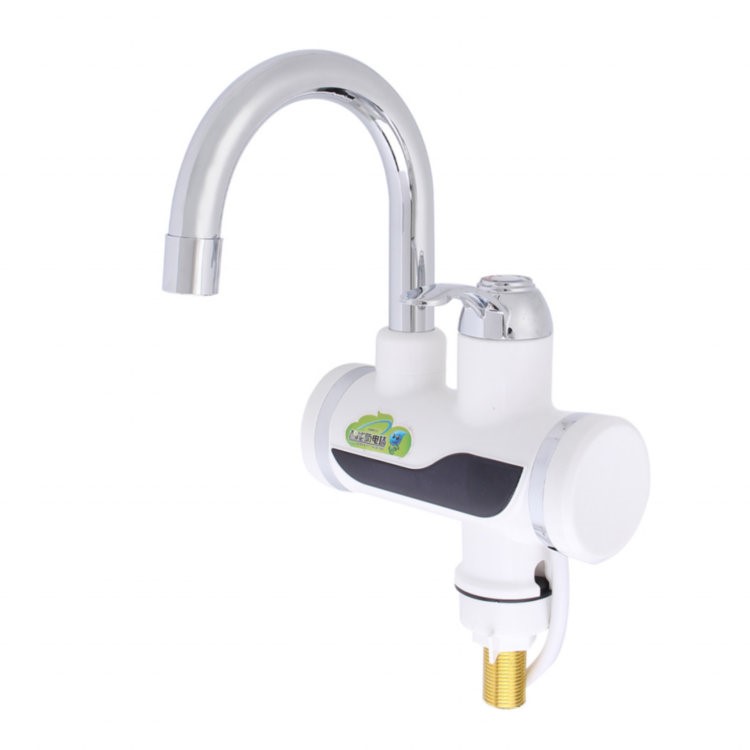
Compact instantaneous water heater
- Water does not stagnate as in storage boilers.
- Relatively low cost.
Minuses:
- High load on the wiring.
- Relatively low heating temperature, especially in winter.
There are not so many negative characteristics of instantaneous water heaters, but on inexpensive models, serious problems with the correct adjustment of the water temperature can be observed.
Water temperature adjustment
As mentioned earlier, instantaneous water heaters can have mechanical or electronic control of heating the liquid. Regardless of the type of device used, the operation of the device should be carried out with the correct temperature conditions:
- For a shower - 40 degrees.
- For washing dishes - 45 degrees.
This value of the hot water temperature makes it possible to achieve not only a comfortable use of flowing equipment, but also significantly save energy. Despite the increased power of this type of water-heating devices, the cost of hot water supply is reduced due to the short time of the device.
How to choose a flowing electric water heater in an apartment, shower
Not only the provision of hot water in the required volume, but also the duration of operation of the device will depend on the correct choice of a hot water device. When choosing a flowing device for installation in an apartment or in a private house, the following principles must be followed:
- Power devices must not exceed the maximum allowed current value. If a too powerful device is installed, then when the hot water tap is opened, an emergency shutdown of electricity is possible. If it is necessary to provide a large house with hot water, then in this case it is recommended to choose a three-phase device. Before purchasing such a device, you should also make sure that there is the possibility of connecting a three-phase electrical network.
- Type of control the appliance also has a significant impact on the final decision in favor of purchasing a particular instantaneous water heater model. The electronic version of regulating the water temperature allows for a more accurate setting of this parameter, as well as making changes to the heating using the remote control.
- Appearance devices, as well as the quality of the paintwork is not the least important when choosing a instantaneous water heater.With equal technical indicators, preference should be given to a model that fits perfectly into the design of the room.
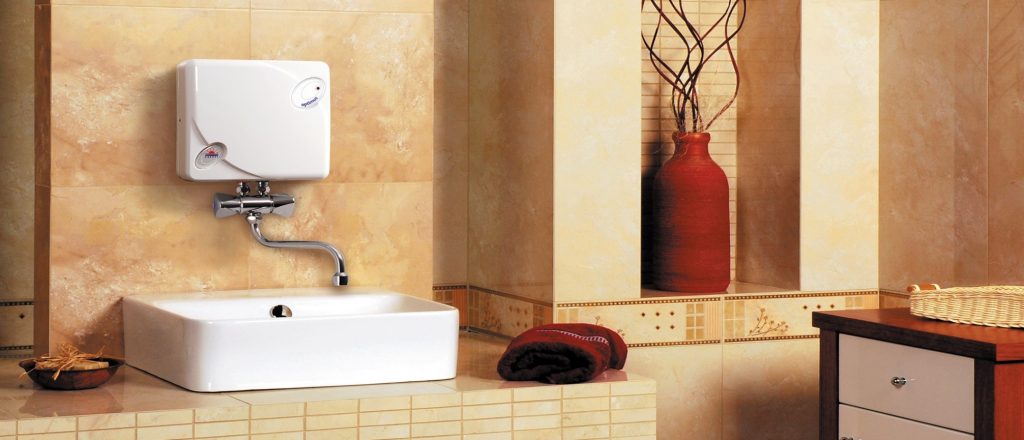
Ideal for any interior.
If the water heater is purchased for installation only in the bathroom or in the kitchen, then it is enough to purchase a device with a capacity of about 5 kW. The cost of the flow device, in this case, will be only about 2500 rubles.
In order for the water-heating equipment to serve for many years, without any deviations in operation, it is recommended to purchase devices from well-known manufacturers.
Top 5 models of instantaneous electric water heaters
You can simplify the process of choosing a high-quality instantaneous water heater if you are guided by the recommendations of real buyers of this type of electrical appliance. The following models are most popular among the population:
Electrolux Smartfix
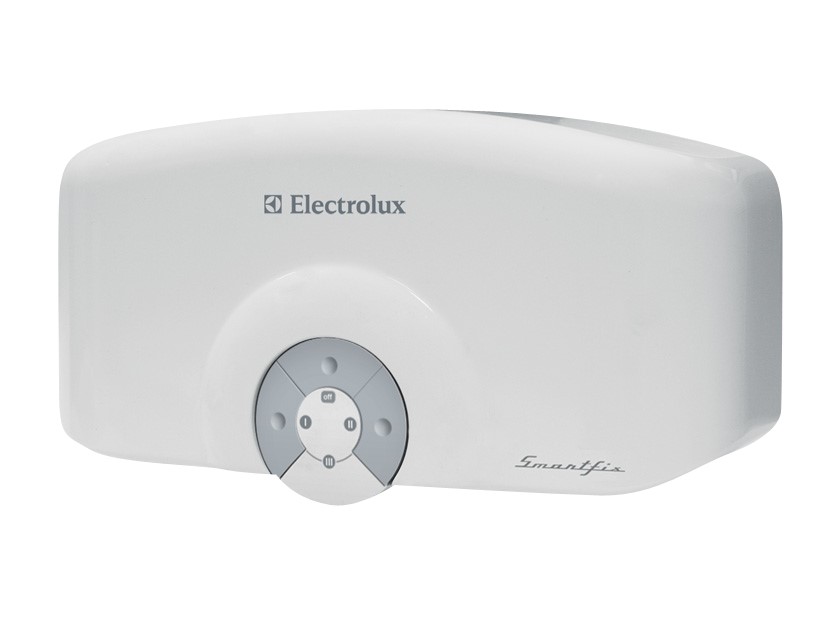
Electrolux Smartfix
Powerful, compact and inexpensive water heater. The capacity of the water heater is 3.7 liters per minute. The hydraulic control system of the device allows you to select 1 of 3 temperature conditions. The electricity consumption when switching modes also changes accordingly. The device has a built-in overheating protection system, as well as a kit consisting of a water tap, shower hose and nozzle. The main disadvantage of this device is only the lack of the ability to connect more than 1 water point. You should also take into account the fact that the water heater of this model will only work if a minimum fluid pressure of 0.04 Bar is provided in the water supply.
Timberk WHEL
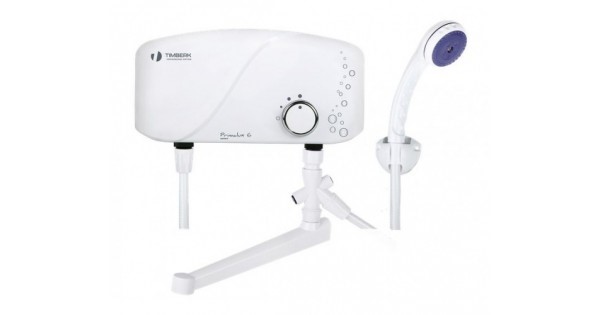
Timberk WHEL
This model of a flowing electric water heater from a well-known Scandinavian brand has excellent operational characteristics. Despite the limitation in the use of the device at more than one draw-off point, the device is very popular among buyers, due to its low cost and high performance. At the same time, the compact size of the device allows for installation anywhere in the bathroom or kitchen. The weight of the device is also small and is only 1.19 kg. This device allows you to heat water from 16 to 60 degrees with an intensity of up to 4.5 l / min, but only if connected to the water supply with a minimum pressure of 0.03 bar.
Hyundai H-IWR1
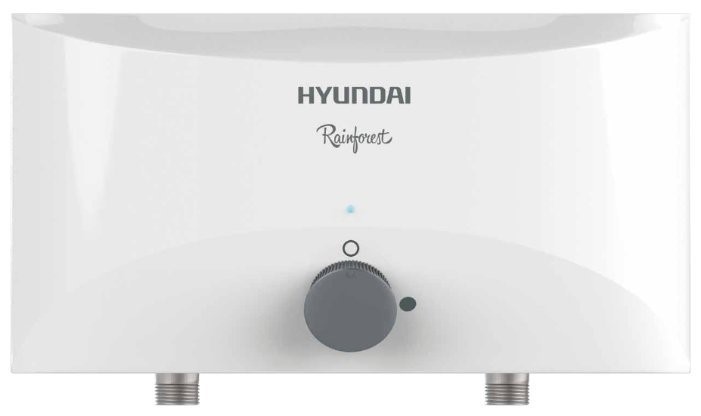
Hyundai H-IWR1
Instantaneous water heater designed for installation for only one point of consumption. The device is equipped with standard nozzles, so it can be used immediately after connecting to the water supply system and electrical network. The capacity of the hot water device is 3.6 l / min with a power of 5.5 kW. The flow device has built-in protection against overheating, so the entire control process consists only in the mechanical setting of the maximum temperature for heating the water.
CLAGE CEX 9
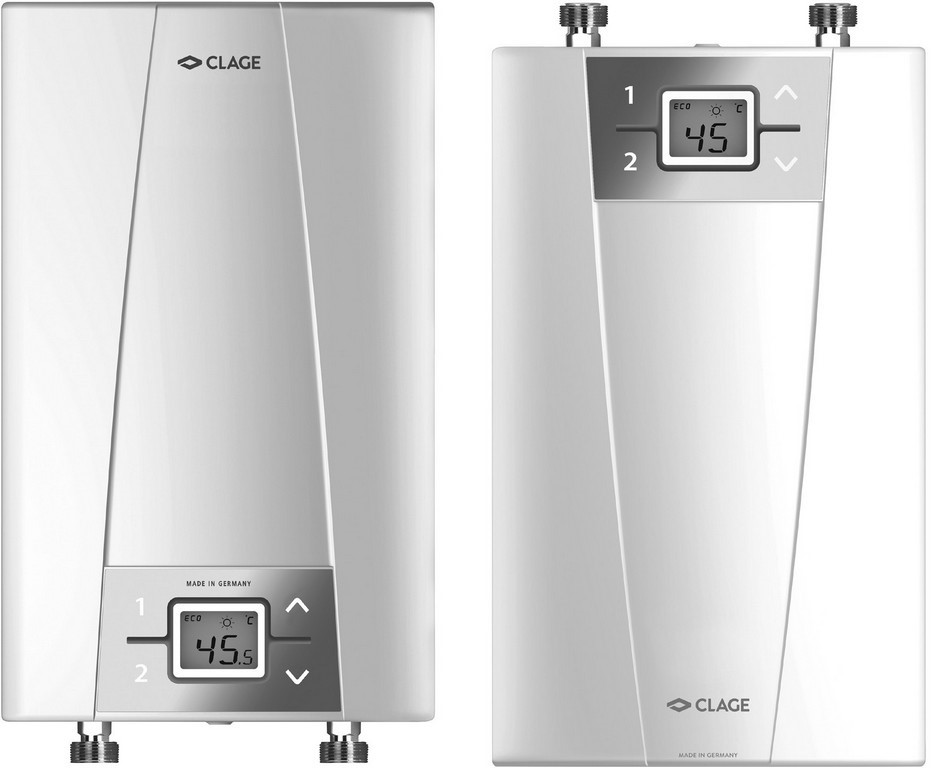
CLAGE CEX 9
The CLAGE CEX 9 water heater is designed to work under high pressure, so it can be installed in such a way that it is possible to provide all the drawdown points with enough hot water. Of course, high productivity was reflected in the cost of water-heating equipment. The price of a water heater of this model is about 10 times higher than small models installed directly at the water-folding point. The power of the water-heating equipment is installed at the installation stage. The heater can work in 6 or 8 kW mode, but even with increased power to the device, for normal operation, a voltage of 220 V. is enough.
STIEBEL ELTRON
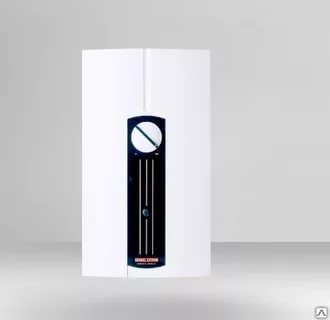
STIEBEL ELTRON
A 24 kW instantaneous water heater allows one or more water outlets to be provided. The heating performance is at least 12 l / min, with a difference of the incoming and outgoing liquids of 28 degrees Celsius. Thanks to the installed heating element made of high-quality copper, it is possible to achieve trouble-free operation of the device for a long time.Also, overheating protection is built into the water-heating system, which will also help to maintain the operability of the device in the event of a failure of the main heating control elements. The presence of a supplied three-phase current is a prerequisite for connecting STIEBEL ELTRON, therefore, choose this type of instantaneous water heaters only for installation in a private house.
The difference between a flowing water heater and a storage one is, first of all, in the rapid heating of water, while the amount of hot liquid can be unlimited. These advantages are the main ones when choosing an autonomous hot water system of this type.

